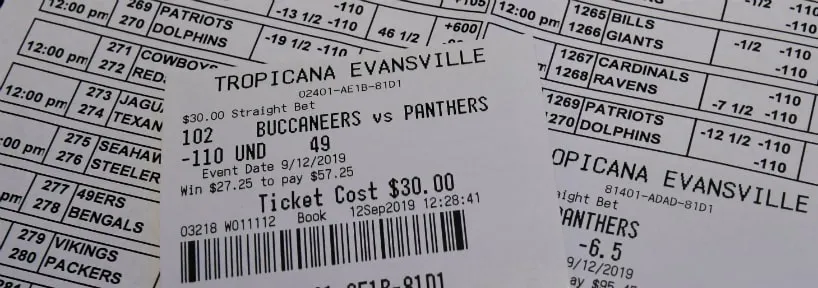How to Understand Sports Betting Odds

It is important for beginners to understand sports betting odds before placing any wagers. As more states legalize sports betting in the U.S., more people will be drawn to it, and if you are a novice sports bettor, a sportsbook’s odds board or homepage on a mobile app may look like complete gibberish. In this article, you’ll be introduced to all the basic terminology you need to know, including sports betting odds.
We will also use this terminology to explain how to read what you see on an odds board and how to apply this knowledge to your wagers.
Understanding Sports Betting Odds
| Rotation Number | Teams | Point Spread | Over/Under | Moneyline |
| 403 | Cowboys | -8 | 42.5 | -400 |
| 404 | Chiefs | +8 | 42.5 | +300 |
Rotation Numbers
Rotation numbers are commonly used at in-person sportsbooks. These numbers allow bettors to easily reference their bets when approaching the cashier.
Suppose a bettor wanted to wager on the Cowboys spread. They would approach the cashier and say, “I will take number 403, Cowboys -8 for [whatever the bet amount].” The cashier would then display the proposed bet on a screen for the bettor to look at, along with the possible payout. If the bettor was satisfied with the bet, the bet would be finalized once the bettor handed the cashier their money.
Telling a cashier the rotation number of a bet is not absolutely mandatory. One could simply say, “I’ll take the Cowboys -8,” and the cashier will likely know that the customer is referring to an NFL point spread. However, one cannot assume the cashier is knowledgeable about every sport, so telling the cashier the rotation number makes their job easier.
Point Spreads
The most common type of sports bet is betting on a point spread. Point spreads are, in essence, a handicap to even the odds between two teams. The favorite will always have a minus sign attached to their number, while the underdog can be identified with a plus sign.
Bettors who wager on the “Cowboys -8” believe the Cowboys will win by more than eight points. Those who bet on the “Chiefs +8” think the Chiefs will either lose by less than eight points or win the game outright. If the game ends with the Cowboys winning by eight, that is considered a “push,” and point spread bettors get their money back.
Over/Under
Over/unders are also referred to as “totals” in the sports betting world. With over/unders, one is not betting on how much one team will win or lose by; instead, an over/under is a wager on how many points will be scored.
Those who bet on the “over 42.5” think the Cowboys and Chiefs will combine to score more than 42.5 points. Those who bet the “under 42.5” think the two teams will combine to score less than 42.5. Notice how, with this particular line, there can be no “push” since there cannot be a half-point scored.
Moneylines
Similar to point spreads, a moneyline favorite can be identified with a minus sign next to the number, while the underdog will have a plus. With a moneyline bet, one simply bets who will win the game regardless of the margin of victory.
The Cowboys have a moneyline of -400, introducing another important sports term called the “vig.” Those who bet the “Cowboys moneyline” would need to wager $400 to return a profit of $100. That same ratio is applied to all betting amounts, so a $100 bet on the Cowboys’ moneyline would net a $25 profit.
If one were to bet the Chiefs moneyline at odds of +300, a $100 bet would return a $300 profit. The payout is so big because they were considered eight-point underdogs to begin with. Therefore, the likelihood of them winning outright is not high. Moneyline odds and point spreads typically go hand in hand. The more points a team is favored by, the more expensive its moneyline will be.
Vigs are Everywhere
Every bet has a “vig,” whether it is money lines, point spreads, or over/under. In this particular example, the odds board did not show the vig regarding the point spread or over/under. A standard vig is -110 on these bets. This means that a bettor who wagers on the Cowboys -8 or the Chiefs +8 would need to wager $110 to return a profit of $100. The same vig applies to either side of the over/under.
If the math to figure out how a vig of -110 works is too tricky, the rule of thumb is that sportsbooks take 10% of the winnings of every bet. However, one must not be a mathematical expert to be a successful sports gambler. Remember, a cashier at a sportsbook will always show you what you stand to win before you finalize your bet.
Get the best online sportsbook offers in your state >>
Mike Spector is a featured writer at BettingPros. For more from Mike, check out his archive and follow him @MikeSpector01.

